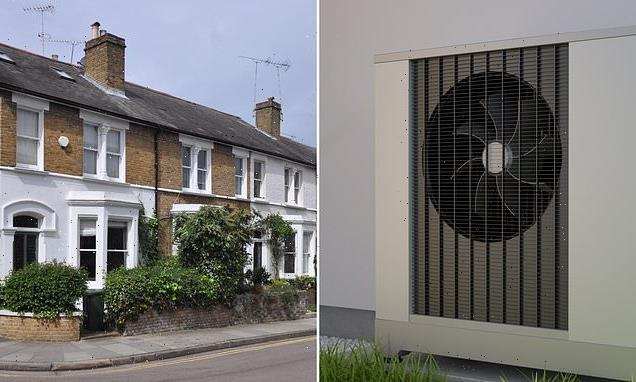Energy efficiency confusion for Britain’s older homes: 60% of period property owners who know they need to go green don’t know where to start
- Government has announced plans to ditch gas boilers as part of net zero targets
- 79% of period homeowners know they need to improve their energy efficiency
- But of them 57% say they don’t know what improvements are needed
Four in five of Britain’s period property owners know they need to improve their home’s energy efficiency, but almost 60 per cent haven’t got a clue where to start, new research suggests.
Some 79 per cent of homeowners surveyed with properties built before 1900 were aware they need to make changes to cut their home’s carbon footprint.
But 57 per cent of this group don’t know what improvements are needed to increase the energy efficiency of their historic homes. Meanwhile, 21 per cent of owners were completely unaware of the need to adapt their properties.
It follows the Government announcing proposals to meet net zero targets in 2050, including plans to ditch gas boilers and better insulate homes.
More than three quarters of owners living in period properties know they need to improve their homes
The findings by specialist lender Together are from a survey of 2,000 homeowners carried out last month.
The lender said there was a large ‘awareness gap’ about the Government’s plans to meet its net zero targets.
Boris Johnson plans for turning Britain green include forcing households to ditch gas boilers, with a £5,000 grant being offered to homeowners to install air or ground heat pumps instead.
After going back and forth on the dates, the Government has now confirmed that gas boilers will be banned from new housing in 2025, and households will no longer be able to buy gas boilers from 2035.
Estate agents have already warned that homeowners living in poorly insulated older properties risk being unable to sell. This is because buyers may be unable to secure finance on the homes due to their lower energy efficiencies.
Together suggested that the cost of making period properties carbon neutral has been ‘greatly underestimated’.
The research revealed 20 per cent of period homeowners want to install a heat pump.
Installing a heat pump can reduce a household’s carbon footprint by at least 2.5 tonnes of CO2 per year, according to The Eco Experts. But installation – before any grants – can cost between £10,000 to £18,000, The Energy Saving Trust has revealed.
Period homeowners considering fitting a ground source heat pump also need to look at fully insulating their property first – pushing up installation costs even higher.
Together’s survey found the average period homeowner would only be willing to spend £5,480 in total on their sustainable home improvements.
Installing a heat pump can reduce a household’s carbon footprint by at least 2.5 tonnes of CO2 per year
Scott Clay, of Together, said: ‘Meeting the net zero target by 2050 and tackling climate change is one of the greatest challenges we face today.
‘England has some of Europe’s oldest housing stock and is well-known for its high concentration of period homes. While this is a gift for house hunters and property investors, it can be a curse when thinking about carbon emissions.’
He added: ‘What’s clear from our survey is this glaring awareness gap between period property owners who know there is a problem and those who know how to fix it. There is no overnight solution, but there are methods to help turn the tide. More needs to be done to help those living in older houses understand what carbon neutral changes are feasible given their budgets.
BEST WAYS TO INSULATE HOMES
Improving the energy efficiency of a property is widely considered to mean looking at insulation before what kind of heat source is going to be used.
However, this can be more difficult – and potentially costly – in a period property. Austin Barcley, of Improveasy, outlines the best ways to insulate a home…
- The highest volume of heat loss is through the walls and roof of a property so by insulating first it means that any heat generated is retained within the property for longer
- Many period properties were built using a solid wall construction type meaning the only way to insulate the walls is either internally or externally, as they have no cavity
- Both methods are effective, but homeowners must consider the impact they may have on the look of their properties, especially houses with period features as they may either be lost or costly to retain
- When it comes to your roof, always ensure your loft is insulated adequately to 270-300mm, and if you have a ‘room in the roof’ instead of – or as well as – a loft, there is a system for insulating this area too
- You should also consider composite external doors, energy efficient double or triple glazed windows even consider underfloor insulation – especially above an unheated cellar or basement – to get the best energy performance from your heating system
Source: Read Full Article



